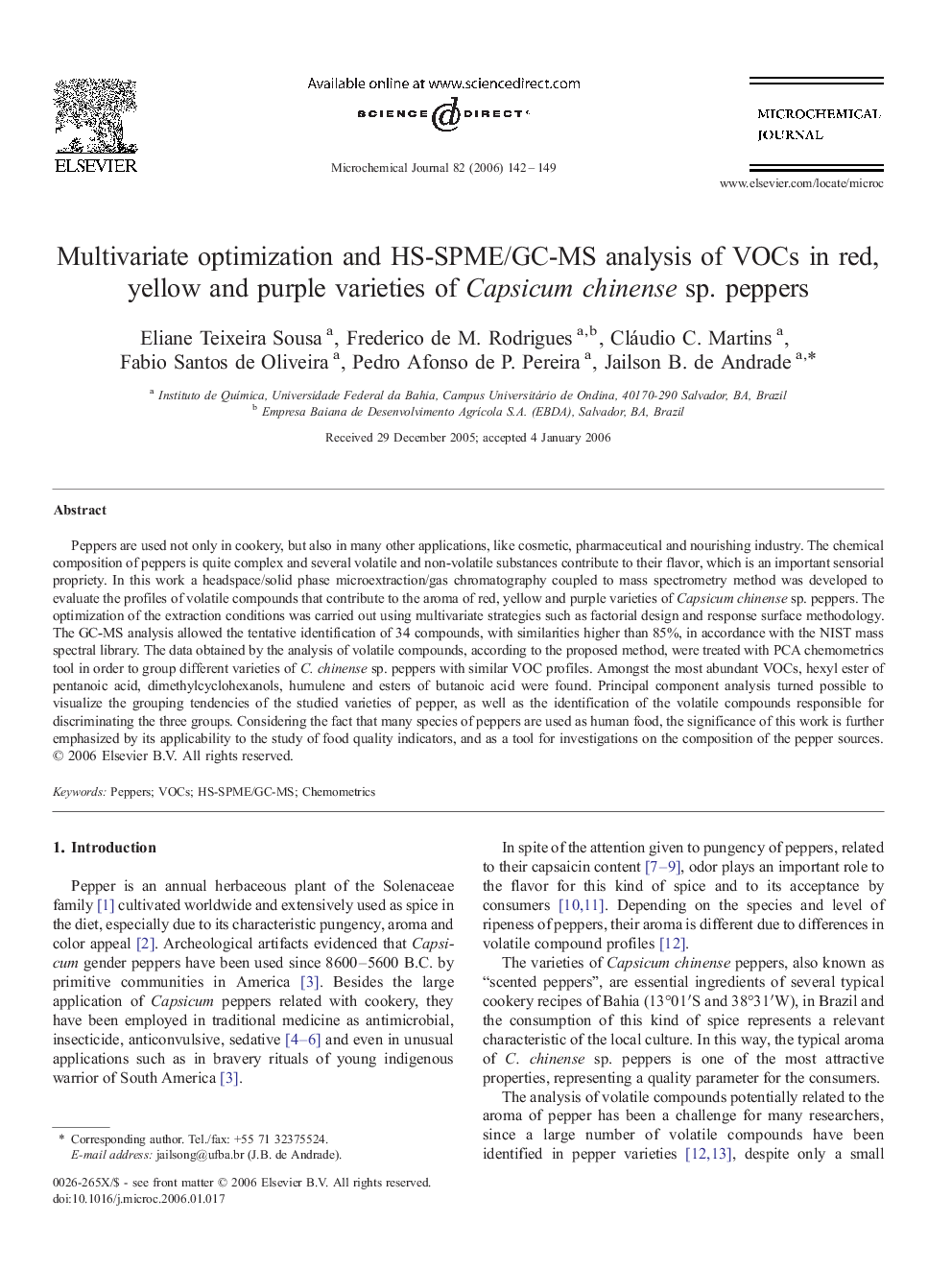| Article ID | Journal | Published Year | Pages | File Type |
|---|---|---|---|---|
| 1228608 | Microchemical Journal | 2006 | 8 Pages |
Peppers are used not only in cookery, but also in many other applications, like cosmetic, pharmaceutical and nourishing industry. The chemical composition of peppers is quite complex and several volatile and non-volatile substances contribute to their flavor, which is an important sensorial propriety. In this work a headspace/solid phase microextraction/gas chromatography coupled to mass spectrometry method was developed to evaluate the profiles of volatile compounds that contribute to the aroma of red, yellow and purple varieties of Capsicum chinense sp. peppers. The optimization of the extraction conditions was carried out using multivariate strategies such as factorial design and response surface methodology. The GC-MS analysis allowed the tentative identification of 34 compounds, with similarities higher than 85%, in accordance with the NIST mass spectral library. The data obtained by the analysis of volatile compounds, according to the proposed method, were treated with PCA chemometrics tool in order to group different varieties of C. chinense sp. peppers with similar VOC profiles. Amongst the most abundant VOCs, hexyl ester of pentanoic acid, dimethylcyclohexanols, humulene and esters of butanoic acid were found. Principal component analysis turned possible to visualize the grouping tendencies of the studied varieties of pepper, as well as the identification of the volatile compounds responsible for discriminating the three groups. Considering the fact that many species of peppers are used as human food, the significance of this work is further emphasized by its applicability to the study of food quality indicators, and as a tool for investigations on the composition of the pepper sources.
